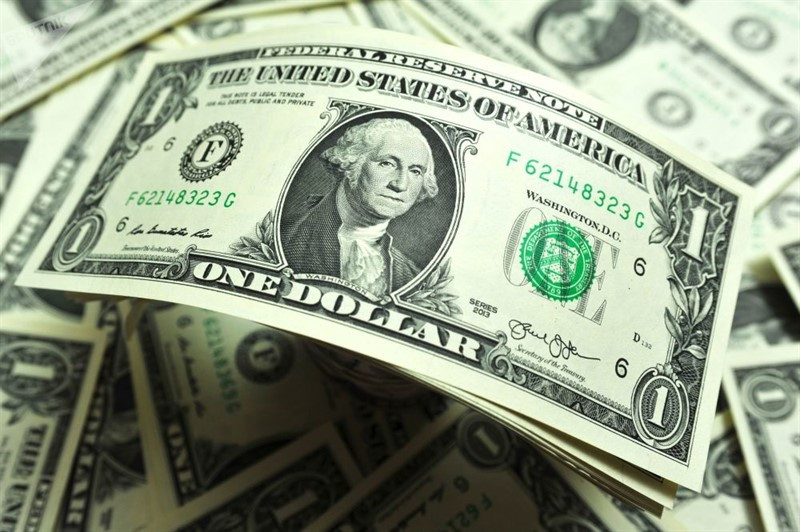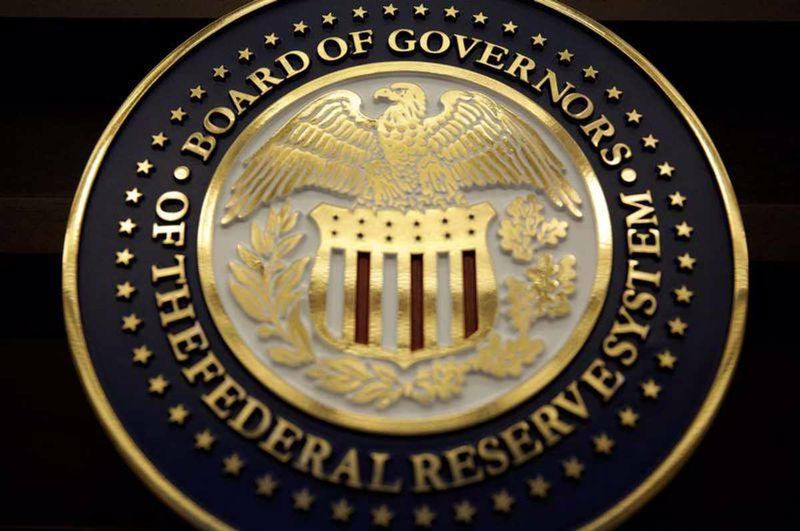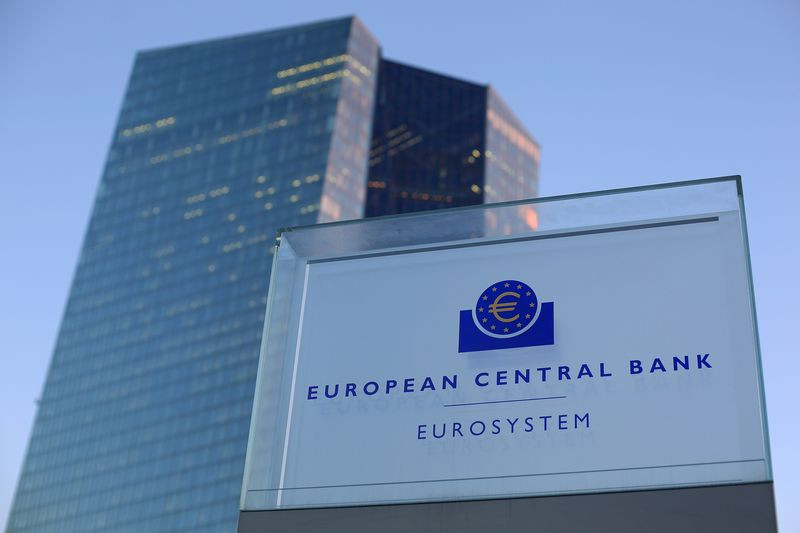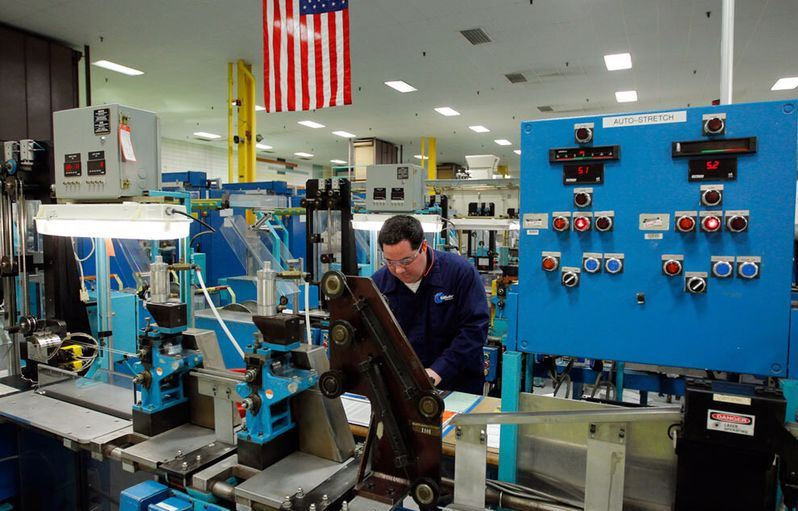
The greenback strengthened by almost 2.5% against its main competitors in August.
A strong national currency reduces the cost of imports to the US, helping the Federal Reserve to reduce inflation.
In addition, the dollar's strength is reversing the easing in financial conditions driven by the recent recovery in the stock market.
The S&P 500 rose about 17% between mid-June and mid-August. However, that rebound has since dried up and stocks have gone down again.
And if anyone else had doubts that the Fed needed stocks to fall in order to tighten financial conditions to curb inflation, then most likely they did not remain after yesterday's comments by Minneapolis Fed President Neil Kashkari.
"I didn't like the stock market rally after our last FOMC meeting," Kashkari said, adding that he was very pleased with the market reaction to the Jackson Hole symposium.
As part of this event, Fed Chairman Jerome Powell promised last Friday to raise the rate and keep it high until the central bank is convinced that it has taken inflation under control. That day was the worst for the S&P 500 in two months: the index lost about 3.4%.
In the next couple of days, the indicator turned down in New York trading, despite the growth in futures during the European session.
On Tuesday, the S&P 500 closed in the red for the third consecutive day, shedding more than 1% and continuing to win back the theme of further rate hikes from the Fed.
Wells Fargo strategists predict US stocks could fall another 9%.
"We expect the S&P 500 to fall below 4000, after which the next key support level will be 3900. Below that, the June intraday low at 3636 comes back into play," they said.
The bank points out that "cracks" are already appearing in the US economy. For example, households with financial problems are running out of savings, inflation-adjusted incomes are falling rapidly, and housing is becoming increasingly unaffordable.
Wells Fargo predicts the United States will enter a recession by early 2023. According to bank analysts, a sharp slowdown in business activity will force the Fed to slow down the tightening of monetary policy and start cutting rates again.

The derivatives market puts into quotes a scenario according to which the US central bank will reduce its key rate by about 40 basis points by the end of 2023.
"As this rate cut is reported, we expect the US dollar to trend lower throughout 2023," Wells Fargo economists said.
They forecast the greenback to peak in the fourth quarter before entering a period of cyclical decline against other global currencies.
For now, the USD will continue to rise. The Fed will raise interest rates by 75 basis points for the third time in a row in September, which will further strengthen the US currency, Wells Fargo analysts believe.
The Fed's aggressive stance remains the main driver of the dollar.
This week, the USD index hit a new 20-year high near 109.50. Although it has declined slightly since then, the index is gaining more than 13% yearly gains.
The report from the July FOMC meeting said that the dollar's strength is the merit of the weakened euro.
Apparently, Fed officials are quite satisfied with the current exchange rate, and they will not object to its further hike.
At the same time, the weakness of the single currency seriously worries the ECB.
Over the past 12 months, the euro has fallen in price against the dollar by almost 15%. This is another pro-inflationary factor, in addition to soaring energy prices, broken supply chains and a tight labor market.
The latest comments from ECB representatives indicate a willingness to raise interest rates more aggressively in the near future to support the single currency.
Thus, ECB board member Isabelle Schnabel said that the central bank must act decisively to combat inflation, despite the risks of a recession.
The head of the Bank of France, Francois Villeroy de Galo, said that another significant rate hike is needed in September.
ECB spokesman Klaas Knot said he was leaning towards a 75 basis point hike in September, but added that he was open to discussion.
ECB Governing Council member Madis Muller said the 75 bps rate hike should be among the options at the next meeting, given the lack of improvement in the inflation outlook.

Hawkish comments from ECB officials helped the single currency rise more than 1% from a 20-year low hit on August 23 near $0.9900.
On Tuesday, EUR/USD closed above parity for the first time since last Monday, finishing in the 1.0012 area.
It continued to struggle for a recovery above the 1.0000 mark on Wednesday.
In the first half of the day, EUR/USD fell below parity, reaching a local low at the level of 0.9970, amid disturbing news from China.
Data released on Wednesday showed that manufacturing activity in the world's second-largest economy contracted again in August.
Investors are increasingly wary of a prolonged economic slowdown in China after the authorities decided to impose tighter restrictions related to the coronavirus in cities such as Dalian, Shenzhen and Chengdu.
The euro bounced back after Eurostat reported that inflation in the currency bloc surged to another record high in August, beating experts' expectations and strengthening arguments in favor of further significant rate hikes by the ECB.
According to preliminary estimates, annual inflation in the region this month accelerated to a record 9.1% in the entire history of observations from 8.9% a month earlier.
Meanwhile, the dollar was hit by ADP data, which showed 132,000 new jobs were created in the US in August, well below the forecasted 288,000. The weak report could add to expectations of less toughness from the Fed.

Although the euro rose above parity with the dollar again on Wednesday, it is on track for its third straight monthly decline.
Analysts warn that the single currency's position looks shaky.
The ECB will raise the rate by 50 bps or 75 bps in September – regardless, the immediate outlook for the eurozone remains a fundamental minefield. Therefore, the EUR/USD pair will remain under downward pressure, Commerzbank strategists believe.
"We do not know if the energy shortage will put pressure on the eurozone economy and to what extent. However, we know that this is a risk that the US economy does not face in this form. In addition, the key rate in the US is 2.25 percentage points higher than in the eurozone, with inflation rates roughly the same. Therefore, if the ECB raises its key rate in line with the Fed in September (that is, by 75 bps), this only means that it will not be left behind. However, this does not put the euro in a relatively better position compared to the dollar. Therefore, at the moment we see little upside potential for EUR/USD," they noted.
Economists at UBS believe that the dollar's further growth is likely in the near future. They predict that EUR/USD will reach 0.9600 by the end of the year.
"That said, we believe the USD will top out in the next six months as markets watch for any turn in the Fed's hawkish stance, the energy crisis in Europe and growth concerns in China," UBS said.
Credit Suisse specialists remain bearish on EUR/USD and stick to their target of 0.9700 at the end of the third quarter.
"We acknowledge that if the ECB is serious about a 75 bps rate hike and the EU is serious about tackling energy issues, then two of our main reasons for being bearish on EUR/USD (interest rate differentials and the energy crisis in Europe) are somewhat weakened. What is not changing is the impact of still high gas prices on the euro area's current account position. The risk of further reductions in Russian gas supplies to the region in the coming months does not change either. There is also no change in the likelihood of risk aversion after the Italian elections on September 25, if the new right-wing government runs into difficulties in budget negotiations with the EU," bank analysts said.
"Achieving our EUR/USD Q3-end target of 0.9700 may now take longer and we are in no rush to change our underlying bearish tone," they added.
Further consolidation within the 0.9900-1.0100 range looks like the most likely scenario for the major currency pair at the moment.
The pair is expected to remain in this range at least until the release of key US employment data on Friday.
A breakthrough of 1.0090 would allow the bulls to head for 1.0105 and then 1.0120. Meanwhile, a breakthrough of the low near 0.9900 could lead to 0.9880 and further to the December 2002 low at 0.9860.
 English
English 
 Русский
Русский Bahasa Indonesia
Bahasa Indonesia Bahasa Malay
Bahasa Malay ไทย
ไทย Español
Español Deutsch
Deutsch Български
Български Français
Français Tiếng Việt
Tiếng Việt 中文
中文 বাংলা
বাংলা हिन्दी
हिन्दी Čeština
Čeština Українська
Українська Română
Română

